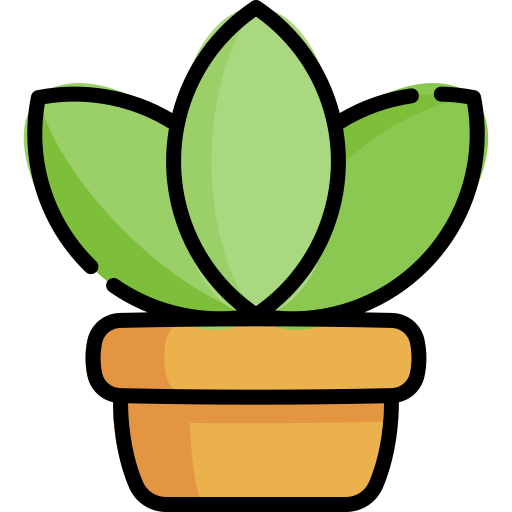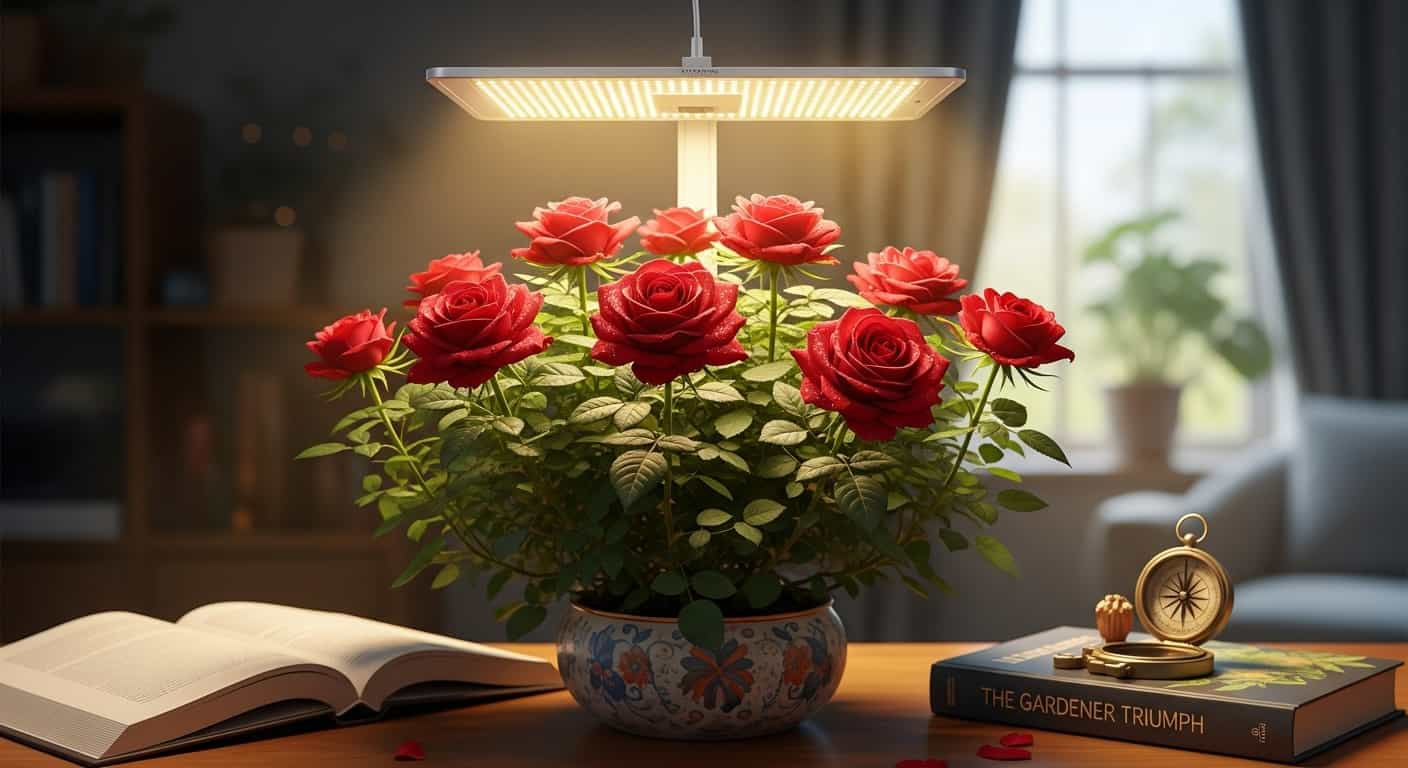Growing roses indoors offers a touch of garden elegance to any home, but it comes with a significant challenge: light. Roses are sun-worshippers, requiring immense amounts of energy to produce their iconic, lush blooms. For many enthusiasts, providing the necessary six-plus hours of direct natural sunlight is simply impossible due to window orientation, seasonal changes, or home location. This often leads to a crucial question: can artificial light fill the gap? The answer is a resounding yes.
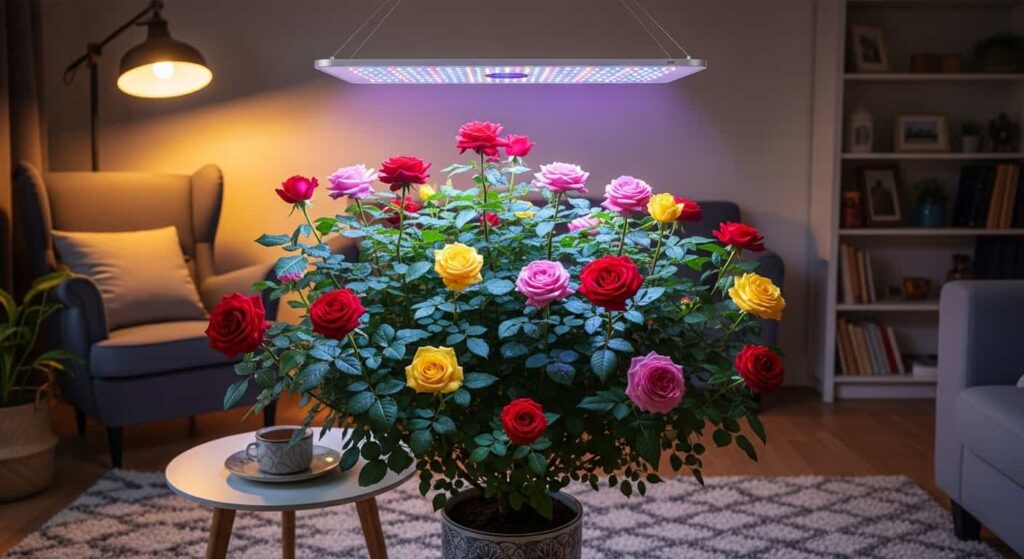
The idea of using grow lights might seem complex or reserved for commercial greenhouses, but modern technology has made it an accessible and highly effective solution for home gardeners. A well-chosen grow light can not only keep an indoor rose alive but also allow it to thrive, producing the same stunning flowers you would expect from a garden-grown plant. For those struggling with leggy growth, yellowing leaves, and a frustrating lack of buds, artificial light is a game-changer.
This guide will demystify the world of grow lights for indoor roses. We’ll explore exactly why and how they work, break down the different types of lights available, and provide a step-by-step plan for choosing and setting up the perfect system for your plants. You will learn how to turn a dark corner into a blooming paradise and ensure your indoor roses get the fuel they need all year round.
Why Light Is the Most Important Ingredient for Blooms
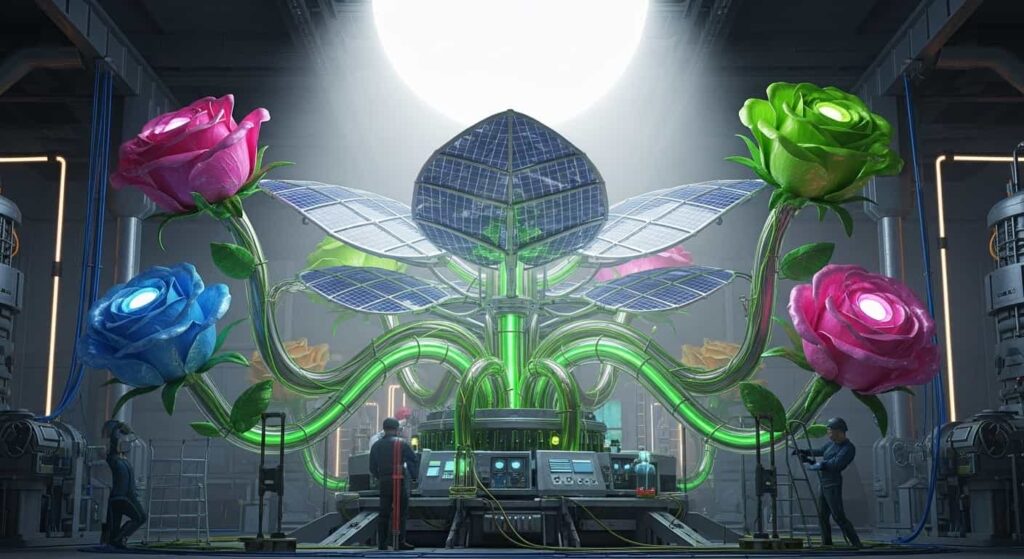
Before diving into artificial light, it’s vital to understand why light is so critical for a rose. The entire life process of a plant revolves around photosynthesis, the conversion of light energy into chemical energy in the form of sugars. These sugars are the fuel for everything the plant does.
Think of a rose plant as a factory. The leaves are solar panels, and the flowers are the premium product.
- Energy for Blooming: Producing flowers is the most energy-intensive activity a rose undertakes. Without a massive surplus of energy generated through photosynthesis, the plant will remain in a “survival mode,” focusing only on keeping its leaves alive. It simply won’t have the resources to form buds.
- Structural Integrity: Adequate light promotes strong, compact growth. A plant stretching for light (a process called etiolation) develops long, weak stems that are unable to support heavy blooms and are more prone to pests and diseases.
- Disease Prevention: Bright light helps keep foliage dry, reducing the risk of fungal diseases like powdery mildew and black spot, which thrive in damp, dim conditions.
A standard indoor room, even near a window, is many times darker than an outdoor garden. Grow lights work by providing the specific wavelengths and intensity of light that plants need to photosynthesize efficiently, effectively mimicking the sun in a controlled environment.
The Verdict Is In: Grow Lights Absolutely Work for Roses
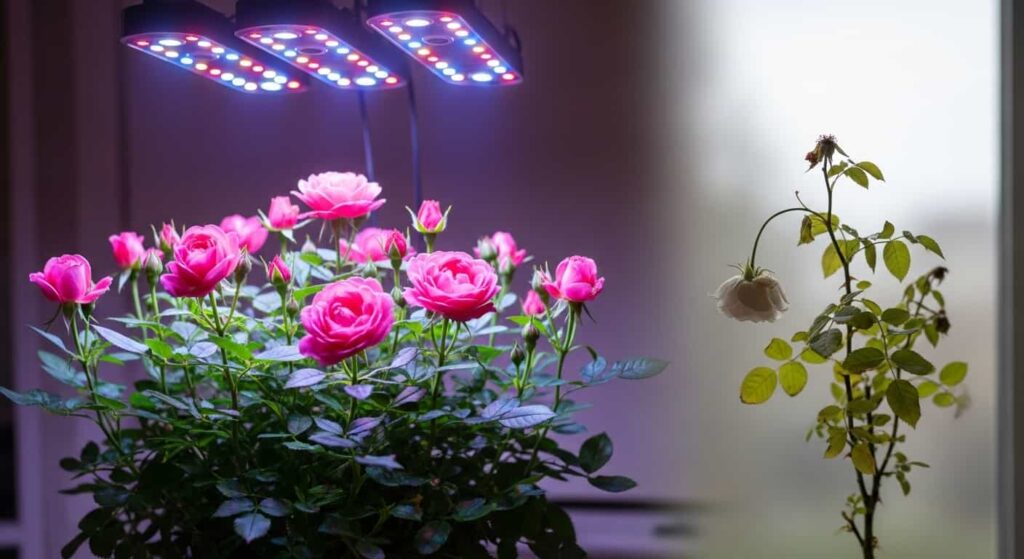
For anyone skeptical about the power of artificial lighting, the evidence is clear. Horticulturalists, commercial growers, and hobbyists alike successfully use grow lights to cultivate everything from delicate seedlings to fruit-bearing trees indoors. Roses are no exception.
The key is that plants don’t care where the light comes from, as long as it contains the right properties. High-quality grow lights are engineered to deliver a precise recipe of light that plants crave. They can be used in three primary ways for your indoor roses:
- As a Primary Light Source: You can grow a beautiful, blooming rose in a room with no windows at all, provided you have a powerful and well-configured grow light setup. This opens up possibilities for basement apartments, interior rooms, or any space lacking natural light.
- As a Supplemental Light Source: This is the most common use for home growers. If your south-facing window is partially obstructed or your east-facing window just isn’t cutting it, a grow light can bridge the gap. Running a light for a few extra hours a day can make the difference between a plant that merely survives and one that thrives.
- For Overwintering: During the dark, short days of winter, even the sunniest window may not provide enough light to keep a rose healthy. A grow light can prevent the plant from declining, ensuring it enters the spring growing season strong and ready to bloom.
Decoding Grow Light Technology: What to Look For
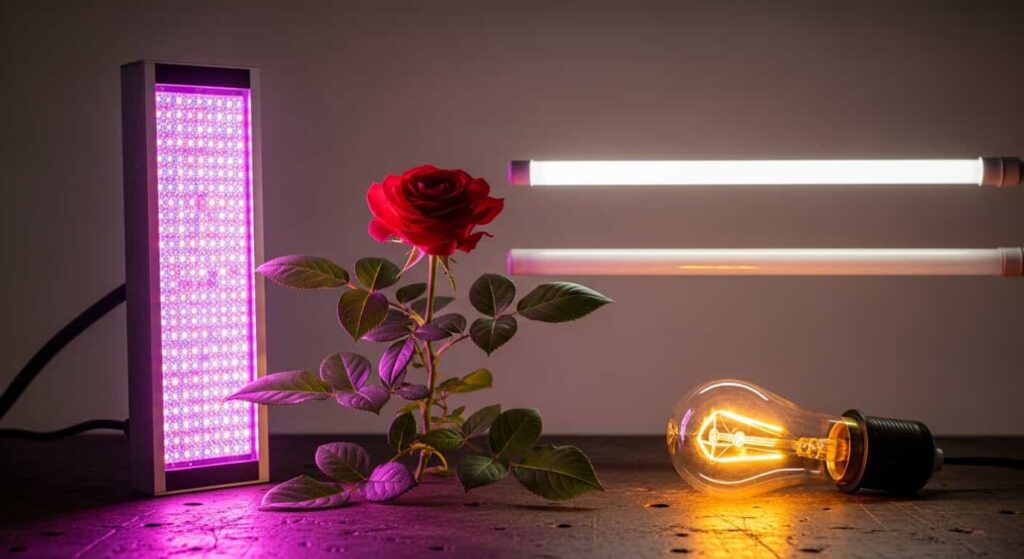
Choosing a grow light can feel overwhelming due to the technical jargon. Let’s break down the most important factors into simple, understandable terms.
1. Type of Bulb: The LED Revolution
While several types of grow lights exist, one stands out as the clear winner for home use: LEDs.
- LED (Light Emitting Diode): This is the gold standard for modern indoor growing.
- Full-Spectrum: Most high-quality LED grow lights are “full-spectrum,” meaning they emit a balanced mix of all the colors of light, mimicking natural sunlight. This is crucial for supporting both vegetative growth (leaves) and flowering.
- Energy Efficiency: LEDs use significantly less electricity than other types of lights, saving you money on your energy bill.
- Low Heat Output: They run much cooler than older technologies. This is a major safety advantage and means you can place them closer to your plants without scorching the leaves.
- Long Lifespan: An LED grow light can last for 50,000 hours or more, which translates to years of use.
- Fluorescent Lights (T5 Bulbs): These were once a popular choice and are still effective, particularly for seedlings and leafy greens. They are less intense than good LEDs, run hotter, and have a shorter lifespan. While they can be used to supplement light for roses, LEDs are a superior long-term investment.
- Incandescent and Halogen Bulbs: Avoid these completely. They are designed to light a room for human eyes, not to grow plants. They produce far too much heat and lack the proper light spectrum, often leading to burnt, stretched-out plants.
2. Understanding Light Quality: PAR and Color Spectrum
You might see terms like Lumens, Lux, and PAR on packaging. For growing plants, PAR is the only one that truly matters.
- PAR (Photosynthetically Active Radiation): This measures the specific portion of the light spectrum that plants actually use for photosynthesis (the blue, red, and full white light ranges). A higher PAR value means more “usable food” for your plant. While many consumer-grade lights don’t list PAR values, those marketed for “flowering” or “fruiting” plants are designed to have high PAR output.
- Color Spectrum:
- Blue Light encourages compact, bushy vegetative growth.
- Red Light is essential for stimulating flowering and fruiting.
- A Full-Spectrum light provides a balance of both, often appearing as a natural white or slightly pinkish light to the human eye. This is what you should look for. Avoid the older-style, blurple (blue/purple) lights, as they are less efficient and unpleasant to live with.
3. Light Intensity and Power
The power of a grow light is measured in watts. For a demanding plant like a rose, you cannot use a simple desktop lamp with a low-wattage bulb. You need a light with enough intensity to penetrate the canopy and fuel flowering.
- For a Single Rose Plant: Look for a dedicated LED grow light fixture or bulb with an actual wattage (not “equivalent wattage”) of at least 30-50 watts.
- For Multiple Plants: If you plan to grow several roses or other plants, you will need a more powerful panel or bar-style light with a higher wattage (100W or more) to ensure even coverage.
How to Choose and Set Up Your Grow Light System
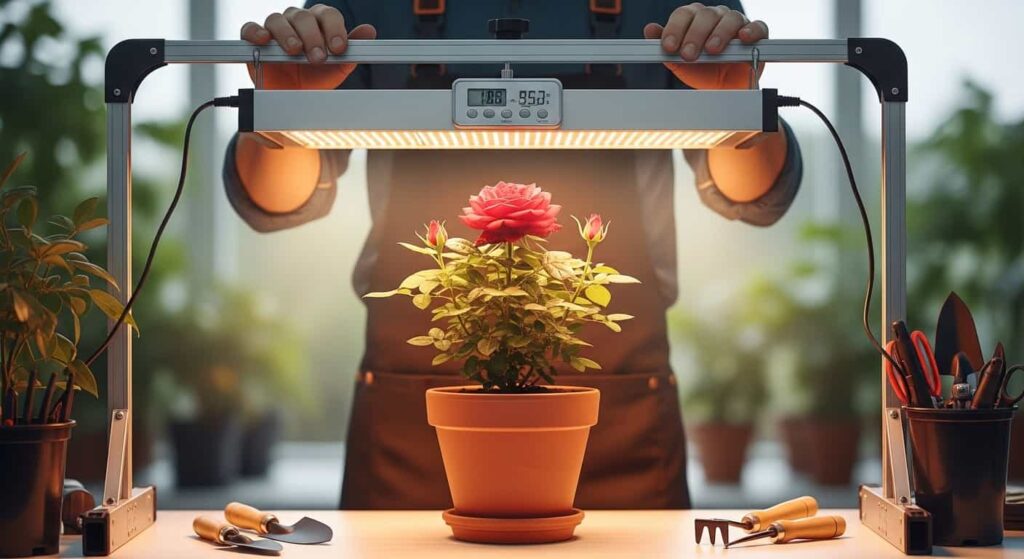
Now for the practical part. Follow these steps to select the right light and integrate it into your home.
Step 1: Assess Your Needs
First, decide how you will be using the light.
- Supplemental Lighting: Are you just trying to add a few hours of light to an existing window setup? A single-bulb fixture on a clamp or stand might be perfect.
- Primary Lighting: Are you creating a growing station in a dark room? You will need a more powerful and larger fixture, like a hanging panel or a multi-bulb setup, to provide all the light the plant needs.
Step 2: Select a Fixture Style
LED grow lights come in many convenient form factors.
- Bulbs (E26/E27 Base): These are designed to screw into any standard lamp socket. This is an incredibly versatile option. You can use a clamp lamp, a floor lamp with an adjustable head, or a hanging pendant fixture. This allows you to precisely direct the light onto your rose.
- Integrated Fixtures (Panels or Bars): These are all-in-one units that often hang from above or are mounted to a shelf. They provide broader, more even coverage and are ideal for multiple plants or as a primary light source.
- Strip Lights: These are less common for roses but can be used to provide side-lighting or to illuminate plants on a multi-level shelving unit.
Step 3: The Importance of Duration and Timers
Unlike the sun, your grow light’s schedule is completely in your control. This requires consistency.
- Set a Schedule: Indoor roses under artificial light need 14-16 hours of light per day. This long “day” provides the cumulative energy required for blooming.
- Don’t Forget Nighttime: Plants need a period of darkness to respire and carry out other essential biological processes. Never leave your grow light on 24/7. An 8-10 hour dark period is crucial.
- Automate with a Timer: The easiest way to ensure consistency is with a simple electrical outlet timer. You can get a basic mechanical one or a digital one for just a few dollars. Set it and forget it—your plant will thank you.
Step 4: Perfecting the Placement
The distance between the light and the plant is critical.
- The Inverse Square Law: Light intensity drops off dramatically with distance. A light that is 12 inches away is four times less powerful than one that is 6 inches away.
- Follow Manufacturer Guidelines: Always check the recommended hanging height for your specific light.
- General Rule of Thumb: For most LED grow lights, a distance of 6 to 12 inches from the top of the plant is a good starting point.
- Observe and Adjust: Your plant will tell you if the distance is wrong.
- Light is too close: You may see white, yellow, or brown “burnt” spots on the top leaves. The leaves may look bleached or crispy.
- Light is too far away: The plant will start to stretch upwards, creating long, spindly stems (etiolation).
Position the light directly above the plant to encourage even, upright growth. As the rose grows taller, you will need to raise the light to maintain the optimal distance.
The Long-Term Benefits of Using Grow Lights
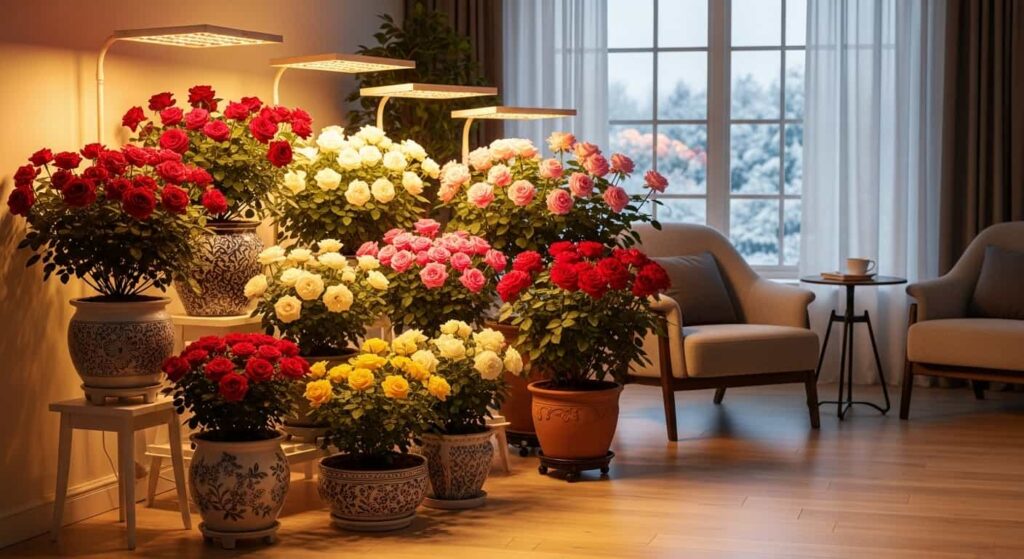
Integrating a grow light into your indoor rose care routine offers more than just survival; it unlocks a new level of success.
- Consistent, Year-Round Blooming: With a controlled light source, you are no longer at the mercy of short winter days. You can provide your rose with a perfect “summer day” all year long, encouraging more consistent and prolific flowering.
- Healthier, More Robust Plants: The ample energy from a grow light leads to stronger stems, lusher foliage, and a more robust root system, making the plant more resilient to pests and diseases.
- Total Location Freedom: Your love for roses is no longer limited by your available windows. You can confidently place your plants wherever you want them, knowing you can provide the perfect light.
Artificial light is not a cheat or a shortcut; it is a powerful tool that empowers you to meet the fundamental needs of your indoor roses. By investing in a quality LED grow light and following the principles of duration and placement, you can reliably provide the energy your plant needs to flourish. Say goodbye to sad, flowerless roses and hello to a vibrant, blooming display in any room of your home, any time of year.
